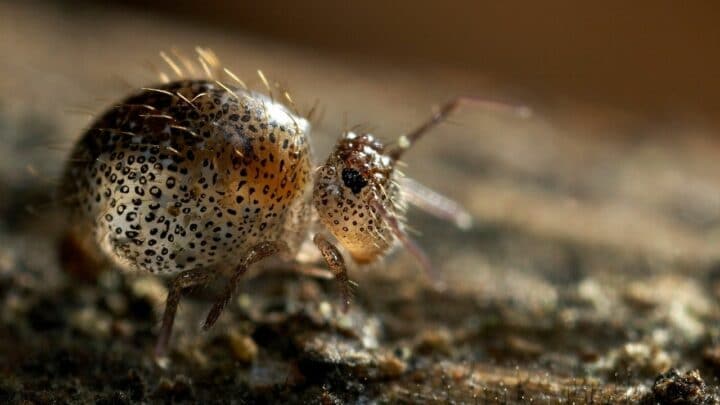Springtails are tiny jumping hexapods that can be beneficial in a garden or home for numerous reasons.
They help break down decaying plant matter, adding to the natural nutrient cycle of the earth and thereby improving the health of your soil.
Their diet makes them a valuable addition to terrariums and aquariums, where they function as a sort of “clean-up” team. Read on to find out how to culture springtails.
How to culture springtails?
To culture springtails, fill an airtight container with a moistened substrate like activated charcoal or peat moss. Add food like uncooked rice or brewer’s yeast. Once the container’s prepared, add the springtails. As they breed, they will require water and food top-ups regularly.
How to Choose a Suitable Container
Springtails are tiny, but they reproduce by the hundred, so when selecting a container, it is essential to choose one that is not too small but is also not big enough to become unmanageable.
In this regard, I recommend using a container as small as a small shoebox.
More important than size, however, is sealing capability. Springtails need to be cultured in an airtight container, so keep this in mind when shopping.
An airtight seal will also lock in moisture which is crucial to successful culturing. Indeed, it is also recommended that you get a second container that you can use to transfer your springtails to their new environment.
Type of Substrate to Use
Activated or pure charcoal is an excellent medium for breeding springtails and is probably the easiest option.
When purchasing activated charcoal, it is usually already in small, manageable pieces that can easily be placed in a container and moistened with water.
Barbeque charcoal and briquettes are a definite no for breeding springtails, as they often contain harmful chemicals.
Peat moss is also a viable option for culturing springtails. Boiling it for an hour or so will sterilize this medium and adjust it to the correct pH level.
Rinse it thoroughly before placing it in your culture container, and drain any excess water, leaving just enough to keep it moist.
What to Feed My Springtails
Once your container is prepared, you can add food for your springtails to live off. If you are using charcoal as your substrate, start by adding a few grains of brewer’s yeast.
In your moist and humid culture container, yeast will mold, which springtails love to feed on.
You can also give your springtails tiny quantities of uncooked rice or couscous. Ensure that you do not overfeed your culturing springtails, as the food will spoil and start to smell.
The better route is to keep an eye on their food supply and top it up every few days. The same goes for water. If your water level is low, top it up.
How t0 Add My Springtails to the Culture Container
Once your container is ready, you can add your springtails and seal them up. You can either use an existing culture, or buy them.
Either way, make sure the container is sealed up so that you don’t end up with rogue springtail infestations in your home.
What to Do with My New Springtails
Within a few weeks, you will more than likely notice an increase in the number of springtails in your culture container.
You can transfer your new springtails from one container to another by filling your culture container with water and pouring it into a second airtight container.
Ideally, they will float on the water’s surface and can be skimmed into the new container quite easily. A spoon or spatula is helpful for this purpose.
You may need to repeat this process until you get as many as you can that are ready for use.
Once you have your newly-bred springtails transferred, they are ready for use in your terrarium or aquarium. Remove the excess water from your culture container before resealing it.
Frequently Asked Questions about How to Culture Springtails
How fast do springtails breed?
The lifecycle of a springtail moves quickly. Male springtails leave sperm cells in the ground, which are picked up by females when they lay their eggs. From eggs, they mature within 4-6 weeks. Springtails have babies four times a year and will produce roughly 200 offspring each time.
Why are my springtails dying?
The most common cause of death in springtail culturing is inadequate access to moisture. They need humidity to breed and survive. Similarly, they need constant access to food. In the wild, springtails can die in droves due to pesticides or chlorinated water.
What is the reason for culturing springtails?
Springtails are beneficial in aquariums and terrariums because they feed off waste and mold. Like in the garden, they add to the nutrient cycle of soil and vegetation in a vivarium and add oxygen to the substrate by tunneling. They’re also great food sources for animals like frogs.
Conclusion
It’s not always easy to think of hordes of tiny jumping bugs as beneficial, but springtails play an essential role in nature and are far more valuable than most people realize.
The itty-bitty critters are like live-in janitors that take care of the cleaning up in your tanks on your behalf.


